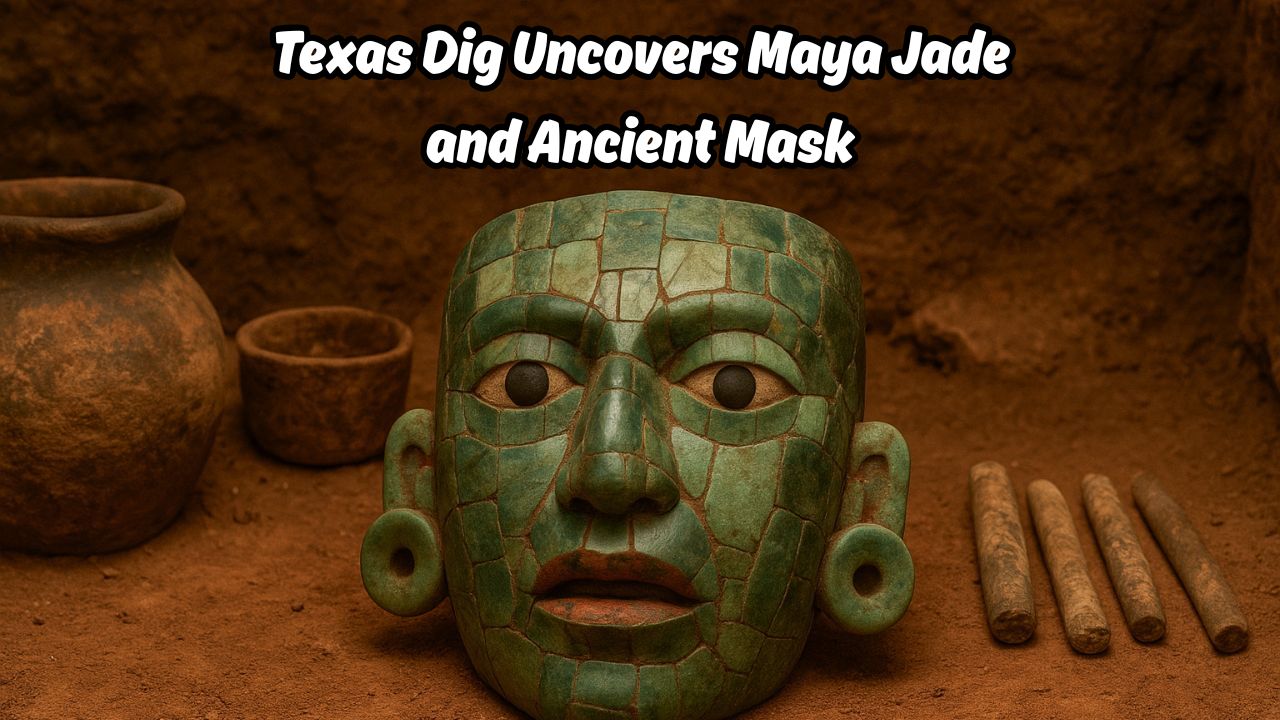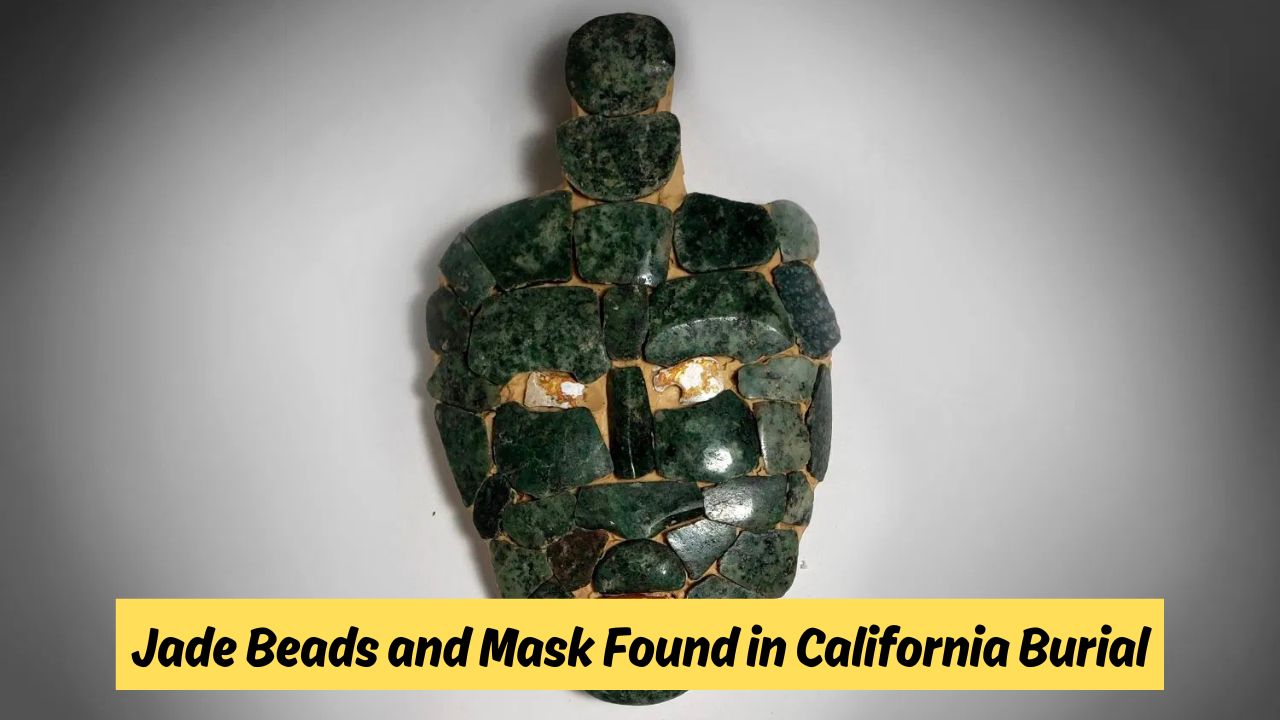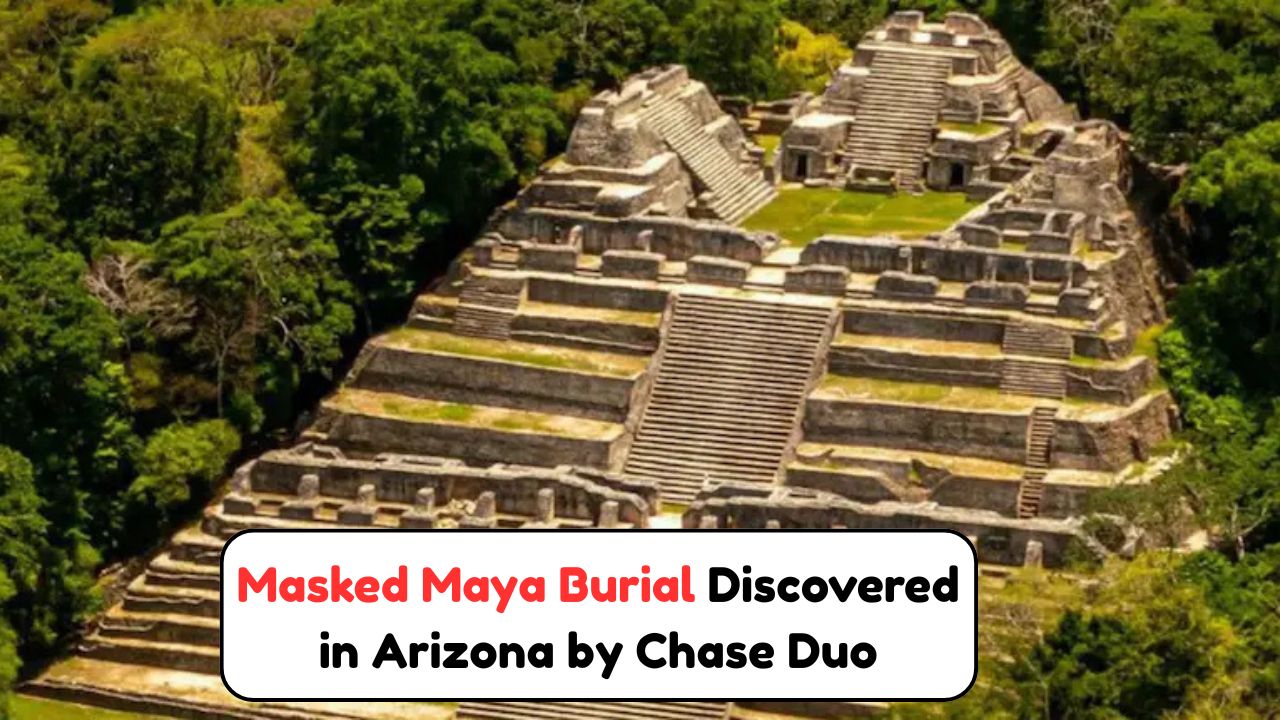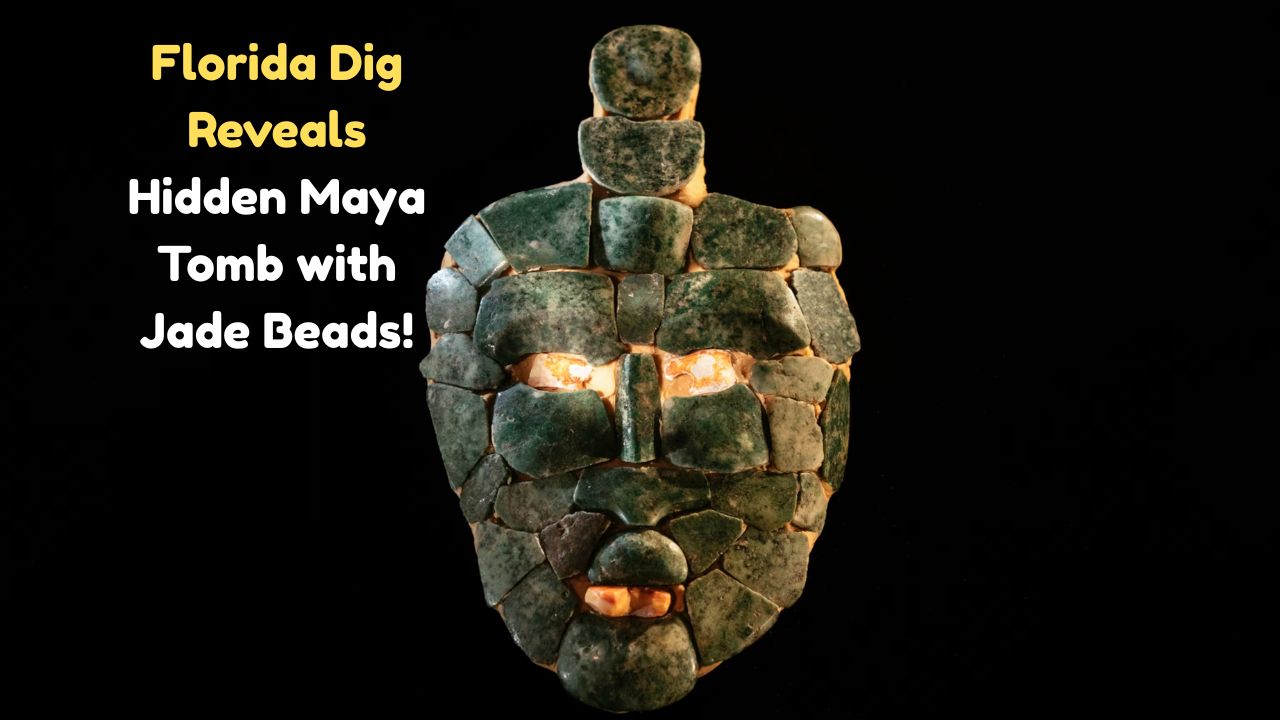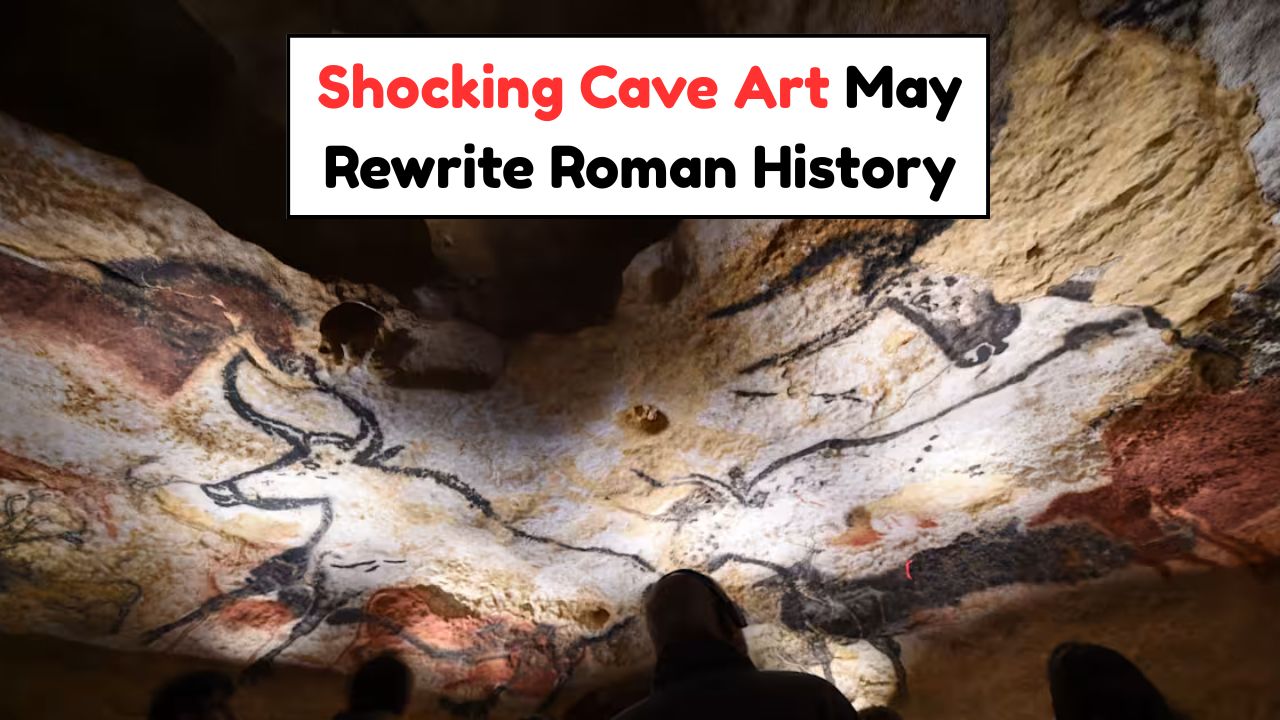Ancient Maya Civilization – In a groundbreaking archaeological discovery, researchers have unearthed a mysterious burial site in Texas that contains a mask and jade beads believed to be linked to the ancient Maya civilization. This revelation has stunned historians and archaeologists alike, who had not anticipated such a significant connection between Mesoamerican cultures and the southern United States. The tomb, referred to as the “Tomb of the Mask,” was found deep beneath a limestone cave system in southern Texas during an excavation led by a joint American-Mexican research team. The findings include intricate jade beads, a ceremonial mask crafted with obsidian and shell, and skeletal remains that exhibit characteristics closely associated with Maya elites. These artifacts mirror those found in prominent Maya cities like Tikal, Copán, and Palenque—leading researchers to believe this could represent a once-unrecognized northern outpost or trade network. This connection suggests that the influence of the Maya civilization may have extended farther north than previously documented. What makes this discovery even more astonishing is the preservation of the tomb’s contents, which has allowed for advanced analysis using carbon dating, isotopic testing, and 3D imaging. These studies have already revealed evidence of long-distance travel, trade, and potential intermarriage between Maya and local tribes. The jade beads, a hallmark of Maya royalty, are considered rare outside the core Mesoamerican region, sparking intense academic interest in the tomb’s true origin and purpose. Experts believe this discovery could reshape existing theories about the geographic reach of the Maya and their interactions with neighboring cultures. As investigations continue, this tomb could very well become one of the most important archaeological finds in the history of North American-Mesoamerican research.
The Discovery Site and Initial Findings
The tomb was located in a cave system near the Rio Grande, a region already known for prehistoric human activity. However, the scale and detail of the artifacts have surprised even seasoned researchers.
- Found in Maverick County, Texas, near the U.S.-Mexico border
- Excavation began in April 2025 following a survey of underground anomalies
- Human remains found alongside ritualistic items
- Mask made of shell, obsidian, and stone suggests ceremonial use
- Jade beads found embedded around the skeletal chest area
- Stone carvings bear resemblance to Maya glyphs
- Initial carbon dating places tomb’s origin between 550–700 AD
- Tomb’s depth and preservation hint at elite burial status
Artifact Analysis and Cultural Significance
Experts from several institutions have analyzed the tomb’s contents using modern technology, revealing intricate craftsmanship and symbolic meaning.
| Artifact Type | Material Used | Maya Connection | Estimated Age | Preservation Level | Symbolism | Comparable Site | Notable Detail |
|---|---|---|---|---|---|---|---|
| Ceremonial Mask | Shell, Obsidian | Ritual Death Mask | 550–700 AD | Excellent | Afterlife passage | Palenque | Similar style to King Pakal’s mask |
| Jade Beads | Jadeite | Royalty/High Rank | 600 AD approx. | Very Good | Wealth & divinity | Tikal | Uncommon this far north |
| Bone Hairpins | Animal Bone | Elite Identity Marker | 600 AD | Good | Social status | Copán | Ornate carvings on shaft |
| Pottery Vessels | Clay | Funeral Offerings | 650 AD | Moderate | Sustenance for afterlife | Uxmal | Red-slipped finish |
| Obsidian Blade | Volcanic Glass | Sacrificial Tool | 620 AD | Excellent | Warfare/Ritual use | Teotihuacan | High sharpness, ceremonial etching |
| Glyph Tablet | Limestone | Religious Script | 580–700 AD | Fair | Ancestral invocation | Calakmul | Rare symbol combination |
| Textile Remnants | Plant Fiber | Burial Wrapping | 600 AD | Poor | Ritual coverage | Copán | Weaving pattern resembles Maya motif |
Symbolic Role of the Jade Beads in Maya Society
The presence of jade beads in the tomb may confirm the elite or semi-royal status of the buried individual. In Maya culture, jade was more valuable than gold due to its spiritual significance.
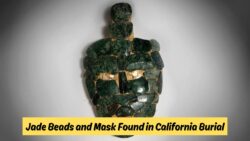 Discovered in California: Tomb Holding Jade Beads and Mysterious Mask Linked to Mayan Royalty
Discovered in California: Tomb Holding Jade Beads and Mysterious Mask Linked to Mayan Royalty
- Jade was linked to the gods and the afterlife
- Only rulers or priests wore multiple beads
- Necklaces, belts, and chest plaques were common among Maya elites
- The beads in this tomb were placed strategically around the heart and hands
- Beads may represent purity, power, and the soul’s journey
Uncovering Trade Routes and Maya Influence in North America
This tomb supports the hypothesis that Mesoamerican civilizations had a broader trade and cultural reach than previously believed. Several signs suggest the movement of goods and people.
- Obsidian likely sourced from Guatemala or Central Mexico
- Shell artifacts hint at Gulf Coast or Pacific origins
- Carvings similar to those from the Petén region of Guatemala
- Skeletal analysis suggests non-local diet, indicating travel
- Mayan-style architecture imitated in burial chamber layout
| Trade Good | Origin Region | Evidence Found in Tomb | Possible Trade Route | Cultural Implication | Related Civilization |
|---|---|---|---|---|---|
| Jadeite | Guatemala Highlands | Beads, Chest Adornments | Highland to Lowland Trail | Royal exchanges and alliances | Classic Maya |
| Obsidian | Central Mexico | Blade | Obsidian Corridor | Weapon and ritual artifact | Teotihuacan |
| Marine Shells | Gulf/Pacific Coasts | Mask Components | Coastal Inland Networks | Burial decoration, currency | Olmec/Maya |
| Cacao Residue | Southern Mesoamerica | Traces in pottery vessels | Maya Chocolate Route | Religious offerings, elite food | Maya |
| Cotton Textiles | Yucatán Peninsula | Textile remnants | Caravan exchanges | Burial wrapping and rituals | Maya/Toltec |
| Red Pigments | Oaxaca Region | Found on pottery and mask | Southern pigment routes | Paint for ritual use | Zapotec |
| Glyph Tablet Stone | Central Lowlands | Inscribed limestone piece | Direct exchange | Religious communication | Maya |
Decoding the Glyphs – Hidden Messages from the Past
Archaeologists are currently studying the stone tablet found in the tomb, which contains a rare combination of glyphs.
- Tablet shows signs of being carved in stages
- Likely narrates the life and death of the tomb’s occupant
- Mentions the word “K’uhul Ajaw” – a term for divine king
- Glyph combination found in fewer than 10 sites worldwide
- Some scholars believe the text references an alliance marriage
Could This Be a Forgotten Maya Outpost?
Some researchers now theorize that this site could be a lost satellite settlement or ceremonial center of the Classic Maya period.
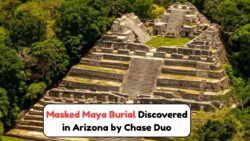 Arlen and Diane Chase Uncover Masked Burial Site in Arizona—Major Breakthrough in U.S. Maya Research
Arlen and Diane Chase Uncover Masked Burial Site in Arizona—Major Breakthrough in U.S. Maya Research
Despite being far from core Maya cities, the complexity and symbolism of the burial align with central cultural practices.
- Burial structure mirrors Maya chamber tombs
- Architectural style includes corbelled vault remnants
- Similar orientation to Maya sun rituals—east-facing chamber
- Presence of ritual goods matches highland burial practices
- No local cultural parallels suggest outside influence
Skeletal Clues Reveal Lifestyle and Status
The skeletal remains offer vital clues into the health, diet, and social role of the individual entombed.
Preliminary osteological analysis has uncovered interesting details.
- Skull modifications consistent with Maya elite (forehead flattening)
- Teeth inlaid with jade chips – a marker of nobility
- Low signs of physical labor suggest elite lifestyle
- Signs of corn-based diet and marine protein intake
- Estimated age at death: 35–40 years
- Male skeleton approximately 5’6″ in height
| Skeletal Feature | Interpretation | Cultural Context |
|---|---|---|
| Flattened Forehead | Artificial cranial shaping | Maya elite tradition |
| Jade Inlays in Teeth | Noble status indicator | Ritual and aesthetic |
| Strong Bones, No Trauma | Non-labor-intensive lifestyle | Likely priest or noble |
| Marine Protein Levels | Diet included non-local seafood | Trade connections |
| Corn Consumption Signs | Staple Maya diet confirmed | Dietary consistency |
| Age at Death | Around 35–40 years | Mid-level noble class |
| Male Skeletal Markers | Identified as male | Burial likely ceremonial |
The Tomb of the Mask discovery in Texas is more than just an archaeological find—it’s a narrative-changing breakthrough that bridges civilizations across time and geography. As more layers of history are uncovered, this site could become a new cornerstone in the understanding of Mesoamerican influence beyond its known borders. Future excavations and analyses are likely to reveal even deeper truths about ancient migration, diplomacy, and the reach of one of the most enigmatic civilizations in the world.
